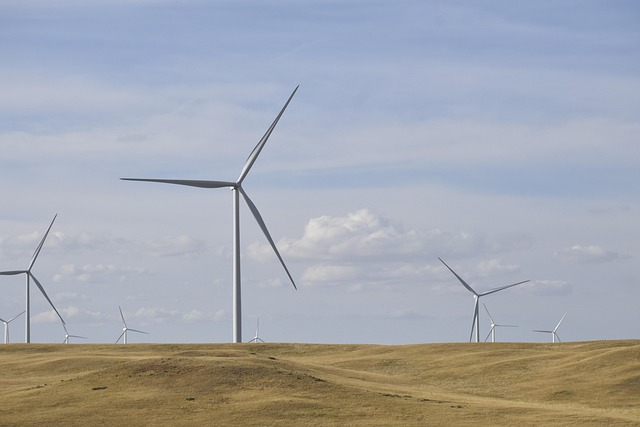Energy recovery has emerged as a cornerstone of modern sustainability strategies, turning waste streams into valuable power and heat. By capturing energy that would otherwise escape into the atmosphere, these processes shrink the ecological footprint of industries, municipalities, and households alike. The concept is simple yet powerful: if a system can harvest and repurpose the energy embedded in materials, fuels, or waste, it can reduce the need for fresh extraction and lower the overall carbon emissions associated with energy production.
Defining Energy Recovery
At its core, energy recovery refers to the systematic extraction and conversion of latent energy from waste or by‑products into usable forms. This includes a broad spectrum of techniques, ranging from recovering heat from industrial exhaust gases to generating biogas from organic municipal waste. The resulting outputs—electricity, thermal energy, or even liquid fuels—can then be fed back into the same or other systems, creating closed‑loop cycles that diminish the consumption of virgin resources.
- Waste‑to‑Energy (WtE): Combines combustion, gasification, or pyrolysis to convert solid or liquid waste into electricity or heat.
- Heat Recovery: Captures high‑temperature heat from processes such as cement manufacturing, steel smelting, or power generation.
- Biogas Generation: Processes organic waste in anaerobic digesters to produce methane, which can be upgraded to biomethane or used directly as fuel.
- Thermoelectric and Piezoelectric Systems: Harvest mechanical or thermal energy from everyday movements or temperature gradients.
Energy Recovery and the Ecological Footprint
The ecological footprint of a sector is often measured by its greenhouse gas (GHG) emissions, resource extraction, and waste generation. Energy recovery directly addresses these factors by reducing the demand for new fossil fuels, cutting CO₂ emissions, and diverting waste from landfills. According to recent studies, a well‑designed waste‑to‑energy facility can lower net carbon emissions by up to 40 % compared to conventional disposal methods.
“Energy recovery is not just about saving energy; it’s about reshaping our entire consumption narrative.” – Green Energy Institute
Green Technologies Driving Energy Recovery
Several green technologies are now at the forefront of energy recovery, each suited to different contexts and waste types. Their integration into existing infrastructures is pivotal for achieving carbon neutrality across economies.
- Combined Heat and Power (CHP) – Also known as cogeneration, CHP captures the waste heat from electricity generation, using it for space heating or industrial processes. In residential settings, micro‑CHP units can supply both power and heat to single households, reducing overall fuel consumption by 50–70 %.
- Anaerobic Digestion (AD) – By processing organic waste in oxygen‑free reactors, AD produces biogas rich in methane. When upgraded to biomethane, this gas can replace natural gas in pipelines, delivering lower lifecycle emissions and enhancing energy security.
- Geothermal Heat Recovery – Capturing low‑grade heat from industrial processes or urban waste heat can be redirected to district heating networks. This approach is especially effective in colder climates where heating demands are high.
- Advanced Thermoelectric Generators (TEGs) – New semiconductor materials allow TEGs to convert temperature differences directly into electricity. Although current efficiencies are modest, ongoing research promises breakthroughs that could make TEGs viable for powering small devices or monitoring equipment.
Real‑World Applications
Across continents, cities and industries are deploying energy recovery systems with measurable impacts. In a leading European city, a municipal WtE plant processes over 500 t of refuse daily, supplying enough electricity to power 20,000 homes while reducing landfill waste by 70 %. In the steel industry, integrating waste‑heat recovery units has cut furnace CO₂ emissions by 15 % and lowered natural gas consumption by 12 %. In a coastal region of Asia, anaerobic digesters treat 30 % of household organic waste, providing both renewable electricity and a marketable fertilizer.
Challenges and Pathways Forward
While the benefits of energy recovery are compelling, several obstacles hinder widespread adoption. Economic barriers, technological readiness, and regulatory frameworks must be addressed to unlock the full potential of green recovery systems.
- Capital Costs: Initial investments for WtE and CHP facilities can be high, requiring long‑term financing and incentives.
- Public Perception: Concerns over emissions from combustion processes sometimes impede project approval.
- Feedstock Variability: The quality and quantity of waste streams can fluctuate, affecting process efficiency.
- Policy Alignment: Harmonizing local, national, and international policies ensures consistent incentives and standards for energy recovery.
To overcome these challenges, a combination of policy reforms, financial mechanisms, and community engagement is essential. Feed‑in tariffs for renewable electricity, tax credits for green infrastructure, and transparent communication about emissions reductions can foster trust and accelerate deployment.
Integrating Energy Recovery into Sustainable Development Goals
Energy recovery aligns closely with several United Nations Sustainable Development Goals (SDGs), particularly SDG 7 (Affordable and Clean Energy), SDG 11 (Sustainable Cities and Communities), and SDG 13 (Climate Action). By reducing fossil fuel dependence and cutting GHG emissions, these technologies help nations meet climate commitments while promoting resilient, low‑carbon economies.
In practice, municipalities can embed energy recovery into circular economy plans, turning waste into resources and creating local job opportunities. Businesses can incorporate waste‑to‑energy units to lower operational costs and showcase environmental stewardship, strengthening brand value and investor confidence.
Future Outlook: Toward Carbon Neutrality
As technology advances, the scope of energy recovery is expanding. Emerging trends include:
- Smart grid integration, allowing real‑time dispatch of electricity generated from waste streams.
- Hybrid systems that combine CHP with renewable sources such as solar photovoltaics or wind, achieving near‑zero net emissions.
- Advanced materials for higher‑efficiency thermoelectric generators, enabling new revenue streams from industrial waste heat.
- Digital twins and AI‑driven predictive maintenance, enhancing operational reliability and reducing downtime.
Collectively, these developments promise a future where energy recovery is not merely a niche solution but a fundamental pillar of global energy resilience. By continuing to invest in research, infrastructure, and supportive policy, societies can reduce their ecological footprint, preserve natural resources, and move decisively toward carbon neutrality.




